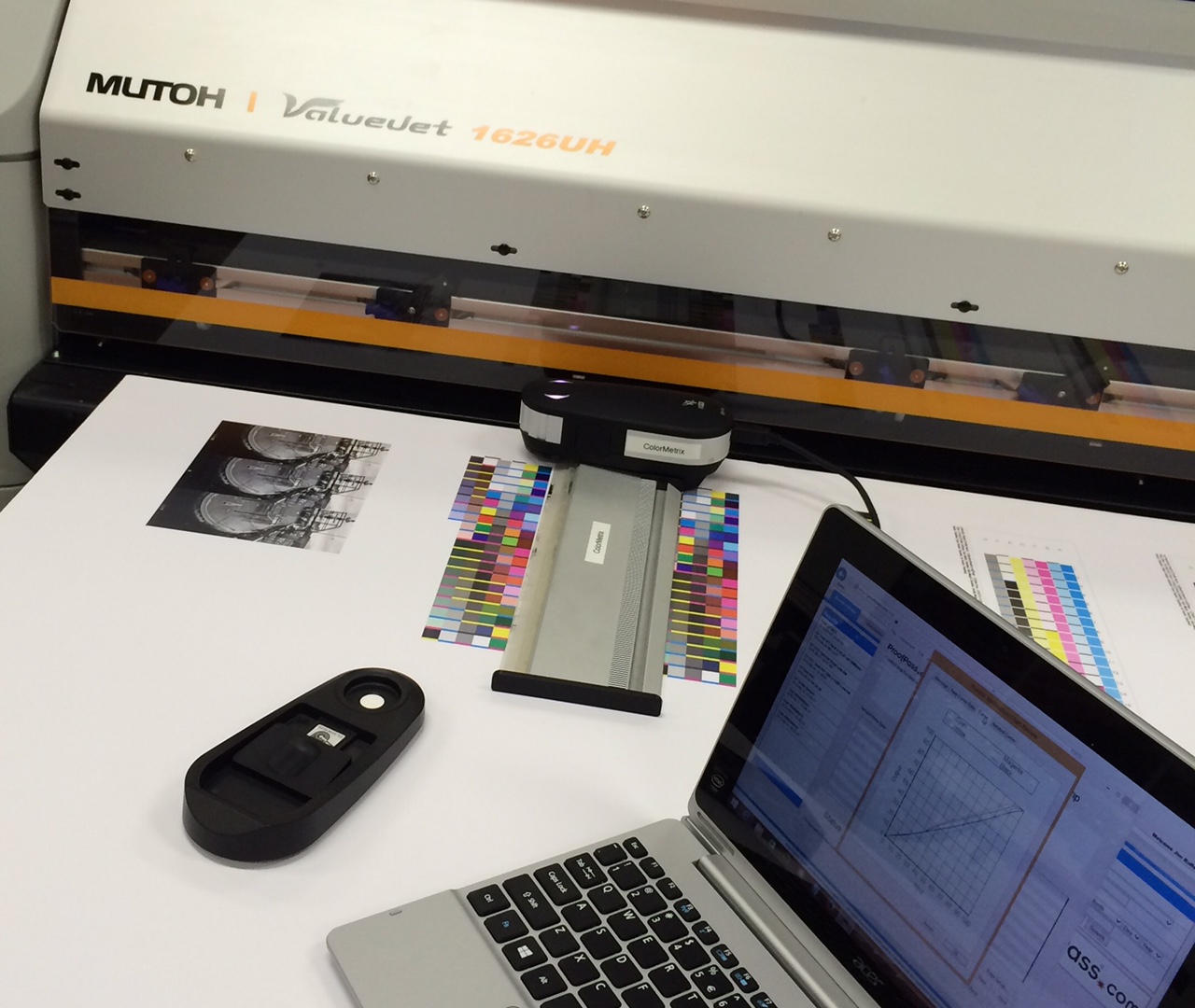
Almost a decade ago, I shared a post about the commitment it takes to perform a proper press fingerprint. As I now spend most of my time helping folks in the digital printing space (primarily wide format inkjet), I thought it would make sense to update my thoughts on “press” fingerprinting.
When I wrote the original post, “press” meant a traditional offset-ink-on-paper piece of equipment and that’s the context in which I answered my customer’s questions and wrote the post. These days, many of my customers refer to large/grand format inkjet equipment as presses; and that’s with good reason since many of these pieces of equipment surpass the 1 million dollar mark to acquire.
Differences when fingerprinting an inkjet press
There are a couple of considerations to keep in mind when fingerprinting an inkjet device used as a production printing press. First, we calibrate the device and then create an ICC profile for the device. This difference is significant because a digital device typically produces a larger and/or different color gamut than a conventional printing press. Then the ICC profile will allow us to simulate a known good print condition like GRACoL or SWOP.
In 2007 when the original post was written, what we were most often doing was determining the dot gain curves the press had when run at industry specified ink densities, like those found in GRACoL and SWOP. We would then use these dot gain values to create adjustment curves for the plate setter so that we’d achieve a more predictable and repeatable result in line with the industry specifications that were prevalent back then.
Keep in mind that we’re talking about a time when the G7 methodology was very new. Very few in our industry had adopted or even knew what G7 was. As a result, the press calibration we created was not necessarily gray balanced, and following this methodology on multiple presses did not necessarily produce finished work with a common visual appearance.
Enter the G7 Method
Enter the G7 method which ensures a common appearance across multiple devices by applying a global specification for targeting a known good print condition based upon gray balance. It’s a system designed to align all processes, substrates and inks resulting in the ability to consistently hit desired color targets.
Now we use the G7 method to first calibrate a printing system and then – for most digital systems – create a custom ICC profile to go with that calibration. The ICC profile is necessary because, unlike a printing press with ink keys and a variety of other settings that can be adjusted while a job is being produced, a digital inkjet wide format press is relatively static once it’s configured and calibrated.
That is to say, the digital file you send is going to print exactly as you’ve set everything up to print. If you don’t like the result, the appropriate corrective action is to edit the digital file; and not to change the setup and calibration of the device. There is a caveat that goes with that: It’s only true assuming you’re doing regular color verification and evaluating those results long-term by using a process control methodology.
The payoff is in process control
Many factors in the printing process can change such as raw materials (inks and substrates), environment conditions (temperature, humidity, etc.), and mechanical factors (head age, breakdowns, etc.). Engaging in regular color measurement and thus verification of color by measuring a control strip with a spectrophotometer allows you to know when your overall process has shifted and needs adjustment.
On the other hand, if your verification and process control data shows the device is producing color the same as it was when it was set up, then the issue is with the digital file you’re sending to the printer. There are many factors that could cause unexpected output; but if the process control data looks good, it’s highly unlikely the problem is with your RIP or printing press. Other problems that could affect your print are the files themselves or workflow issues; but we will cover that in a future blog post.
If you would like to learn more about how to calibrate your device with a method like G7, build an ICC profile, and then verify the color reproduction on a regular basis, please contact us.
Leave a Reply